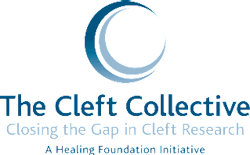Individuals with cleft lip/palate may be unaware of its hereditary properties
____________________________
RELATED
July is National Cleft and Craniofacial Awareness and Prevention Month
The genetics of cleft lip and palate
____________________________
The research conducted consisted mainly of one-on-one interviews with the participants. There was some mixed feedback from people who either felt a rejuvenation to return to treatment after seeing their children and those who felt a new sense of trauma in reliving all their painful memories. Also, while some parents felt guilt for passing along their condition, there was a genuine feeling that because they themselves experienced the same condition, they were well-equipped to help guide their children through childhood and the difficulties they would face. This gives an overall feeling that with the right support in place, this does not have to be a debilitating congenital condition.
In doing this research, the author Nicola Stock felt that “The most surprising finding was that none of the parents who took part had a clear understanding of recurrence risks, despite being born with a cleft themselves. Accurate information and access to genetic counselling is therefore vital for young people born with heritable conditions such as cleft lip/palate, who are prospective parents. In addition, research into the genetic and environmental causes of conditions such as cleft are crucial for education and prevention.” The authors believe that young adults with a cleft palate condition need more support after they reach the age of 18, especially when they are deciding to start families; they should be fully informed of the hereditary impact of their condition.
Full text of the article, “Starting a Family: The Experience of Parents With Cleft Lip and/or Palate,” The Cleft Palate–Craniofacial Journal, Vol. 52, No. 4, 2015, is now available online.

